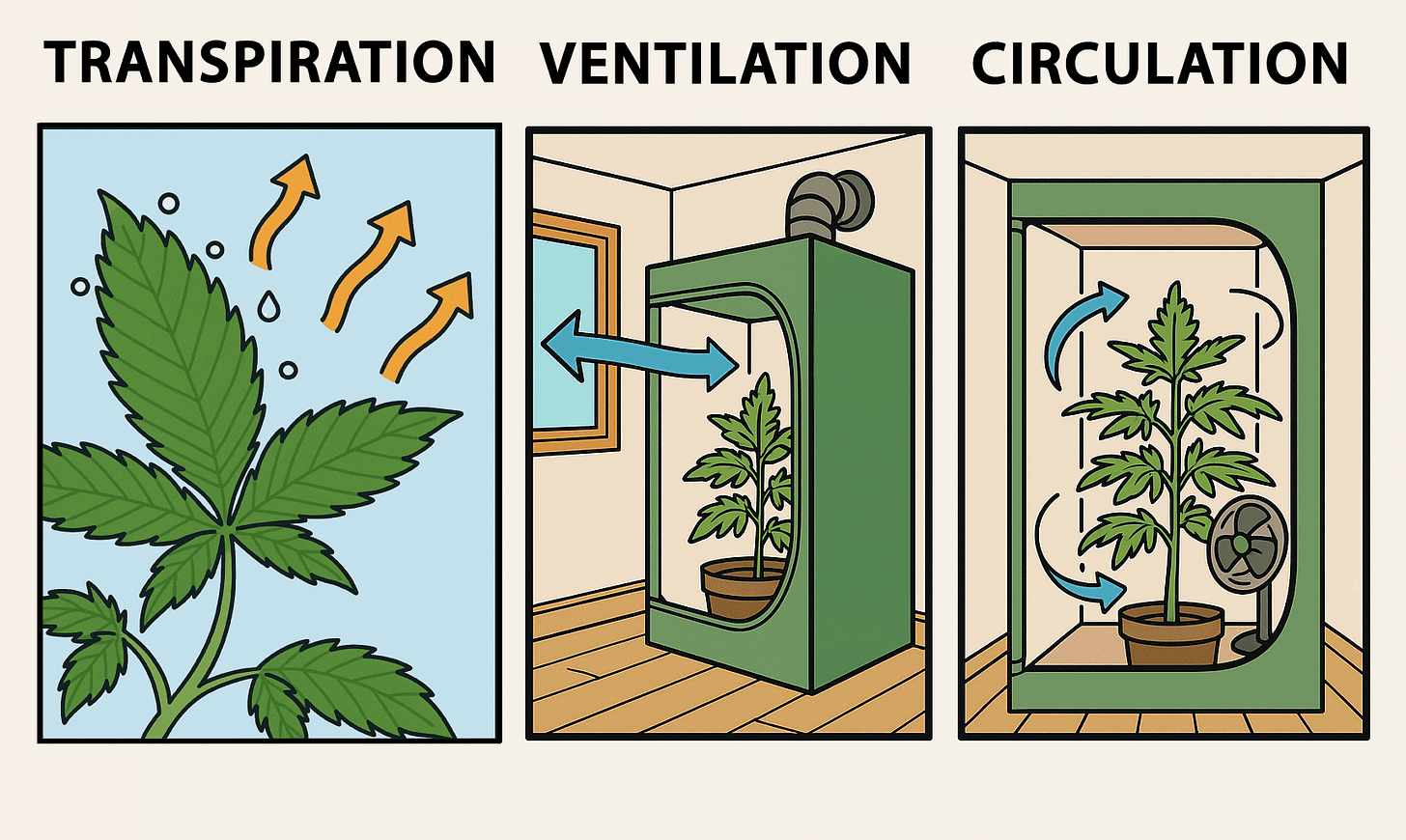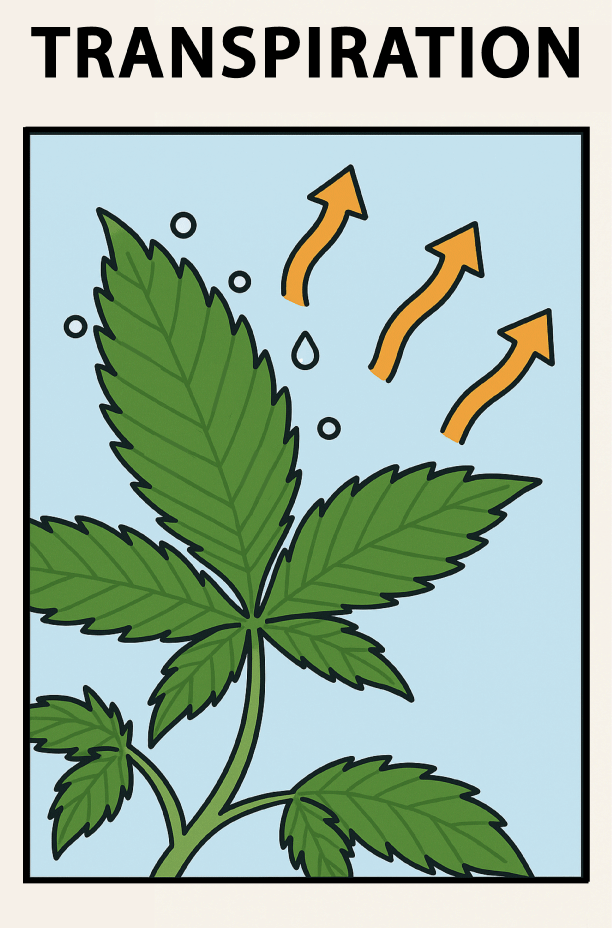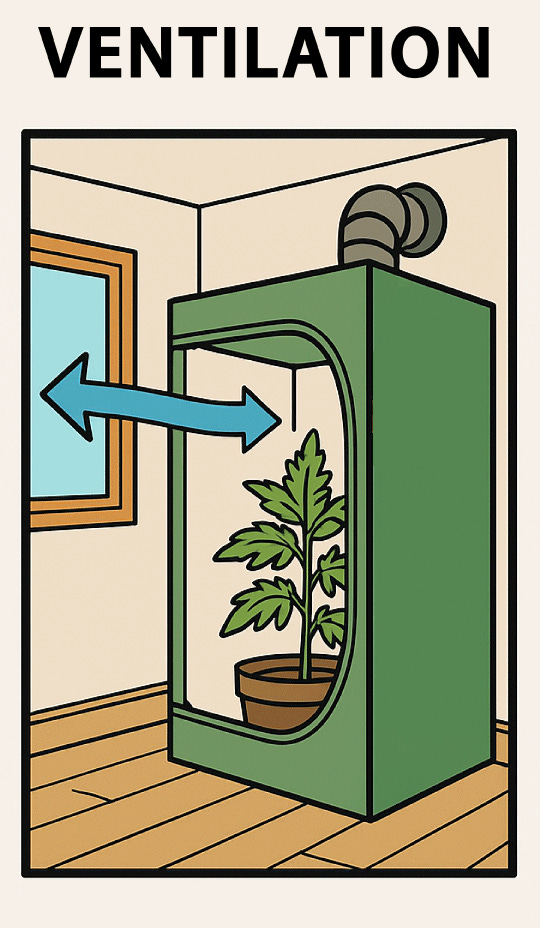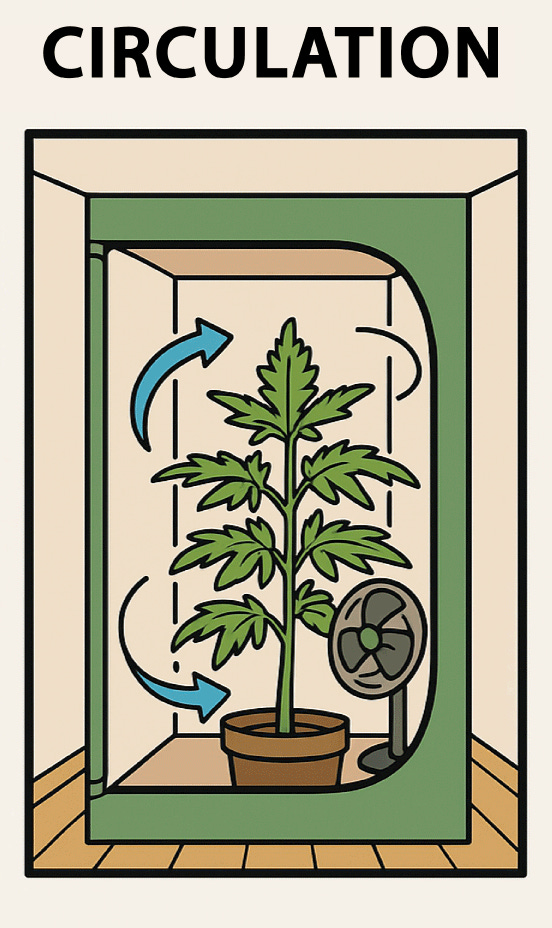Transpiration, Ventilation & Circulation: Mastering Air Quality in the Grow
By Ben Owens & Colin Gordon
—
Why your grow’s air quality depends on managing all three, and what happens if you don’t.

Air Quality Isn’t Just About CO₂ and Temps.
Growers talk a lot about our environments. This usually jumps to temps, humidity, vapor pressure deficit (VPD), CO₂. But those same growers often overlook the impact of their air quality; how the air moves, changes, and mitigates (or encourages) threats inside the grow.
Your goal is to create the kind of air your plants want to breathe.
You do that by paying attention to transpiration, ventilation, and circulation in your space. Because if even one is mismanaged, pathogens like powdery mildew and botrytis can run rampant.
Transpiration: Plant-Based Water Vapor

How plants release water vapor through their leaves.
Transpiration is the process by which moisture is pulled from the substrate, moves through the plant, and exits through stomata as vapor helping regulate temperature, uptake nutrients, and drive internal flow. Your VPD will determine how much your plant can transpire into the space.
If your space has high humidity and vapor pressure, your plant won’t be able to properly transpire. Or, suppose your space is too dry and your vapor pressure too low. Then, your plant will focus its energy towards conditioning the space and releasing vapor at the expense of other processes (like producing biomass and resin).
If your exhaust can’t keep up, the RH curve climbs too high. If air isn’t moving around your space, stagnant pockets develop as your plants transpire. Both of these increase pathogen risks but are easy to fix by adjusting your ventilation and circulation.
Ventilation: Air Intake & Exhaust

Air exchange between the grow and the outside environment.
Ventilation is the process of replacing used, CO₂-depleted, moisture-laden air in the grow space with fresh air from outside the grow.
This could be pulled from and pushed into your lung room, or could be set up to use fresh air from outside the grow entirely. The main thing you want to focus on is turning over all of the air in your space every 5-10 minutes to keep a fresh supply available to your plants.
If the air in the tent starts to feel warm, dense, and stagnant, you might need to turn up your exhaust fan (if your intake is passive), or ramp up both intake and exhaust if you are in a larger space that needs better ventilation. When the air isn’t being refreshed, your grow starts suffocating in stagnant air full of its own byproducts.
Circulation: Air Movement Inside the Space

How air moves within the grow.
Circulation refers to how the air moves throughout the inside of your space to eliminate pockets of hot, humid, or still air and ensure uniform conditions across the canopy.
This is one of the most important aspects of air quality control to avoid climate pockets in your canopies.
Say you’ve got your intake and exhaust dialed, and your temps are in check, but one side of the canopy is consistently showing flyers and powdery mildew. Maybe that corner needs a fan? Or maybe your fans that are in the space are pointing in the wrong directions, preventing fresh air from reaching that corner.
Just because you are pulling in fresh air and expelling stale air does not mean that new air is making it to every corner of the grow. Often, air gets blocked and channeled by dense foliage. This is why fans above and below canopy help move that air around and ensure you don’t have stagnant areas ripe for molds, mildews, and pests.
Air quality is not about any one single variable but rather how these variables work with each other. It’s a system of variables that you use to make sure your plants have the best growing environment.
Understanding the difference between transpiration, ventilation, and circulation gives you the ability to adjust more precisely, act more effectively, and grow more consistently.
Every successful grow breathes well. Make sure yours can.